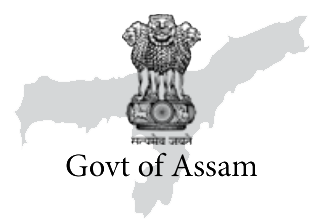It is 6am on May 24. Charuprabha Chaliha, an Assistant Lecturer of Mayong Anchalik College is getting ready to be on time at Hathibhangi Middle English School. After a four-km ride on a motorcycle driven by her brother, she reaches Tetelia Ghat of Pakoria River. The bridge on the river is half constructed. She boards a boat along with her brother and the motorcycle. After alighting from it, they drive through a rickety road for three more km. She then negotiates a narrow bamboo bridge to reach her destination. The time is 8.15am.
Some distance away from Charuprabha’s residence in Mayong is Sampurna Biswas, a resident of a make-shift camp in Hathibhangi. She gets up at 3.45am, unusually early even by her standards. After revision of her lessons, she is getting ready to reach her ME School well ahead of the appointed time of 7am.
It was a coinicdence that these two individuals met during the day since Charuprabha was the external evaluator of the school while Sampurna was there to defend the standard of education of her institution as part of the Gunotsav exercise of the Education Department.
Nearly 46,000 Government/Provincialised/ Tea Garden Management Schools of elementary level up to Class IX through their 42 lakh students across Assam will be evaluated in Gunotsav in three phases. The first two phases have already been completed while the third one is due in the first week of the next month.
Talking to Asom Barta, Charuprabha says, “I am happy with the enthusiasm among the students, guardians and the management. Despite inclement weather, the attendance is 100% in this school. I am pleased with their overall performance.”
“This ME School is not an isolated example. Schools under Hathibhangi Cluster will do well in the exercise despite floods all around. There is a general enthusiasm which you can see. Moreover, it is a fact that the standard in these schools is improving,” says Gambhir Deka, Hatibhangi Cluster Resource Centre Coordinator and Liaison Officer, Gunotsav.
Mrinal Sarma, Assistant Professor of Mathematics in Narengi Anchalik College, is the evaluator of No. 1 Murkata Lower Primary School in the same area. He, too, is happy at the way Gunotsav has made teachers and students responsible for increasing the standard of education in the State.
Far away from Morigaon in Karimganj district is Biroja Sundori Girls’ High School. This 76-year-old school has 350 students from Class VI to X. Despite torrential rains, the attendance in the school was 100% when evaluator KSPV Pavan Kumar, Additional Principal Chief Conservator of Forest, started the evaluation exercise. At the end of the day, the officer was all praises for the school, its management, and the Government. “The enthusiasm among the students and the teachers was amazing,” he told Asom Barta. “Gunotsav helps in capturing the actual state of the learning atmosphere. At an individual level, it provides officers like us an opportunity to revisit our school memories. Kudos to the Chief Minister for initiating such an exercise,” he said.

The enthusiasm in Sivasagar’s Alimur Jnanoday High School under Khelua Education Block was no less. Manik Chetia, the headmaster, attributed the infrastructure and academic development in the school to Gunotsav. “This year, we have improved facilities in the room meant for menstrual hygiene. We are imparting life skills as well as disaster management skills to our students,” he says.
Chief Minister Dr. Himanta Biswa Sarma kicked off this annual exercise on May 11 at Ghorabandha Junior Basic School in Sipajhar of Darrang district. In the first phase, 15,313 schools in 10 districts were evaluated while 13,799 schools were evaluated in nine districts in the second phase despite challenging weather conditions across the State.













